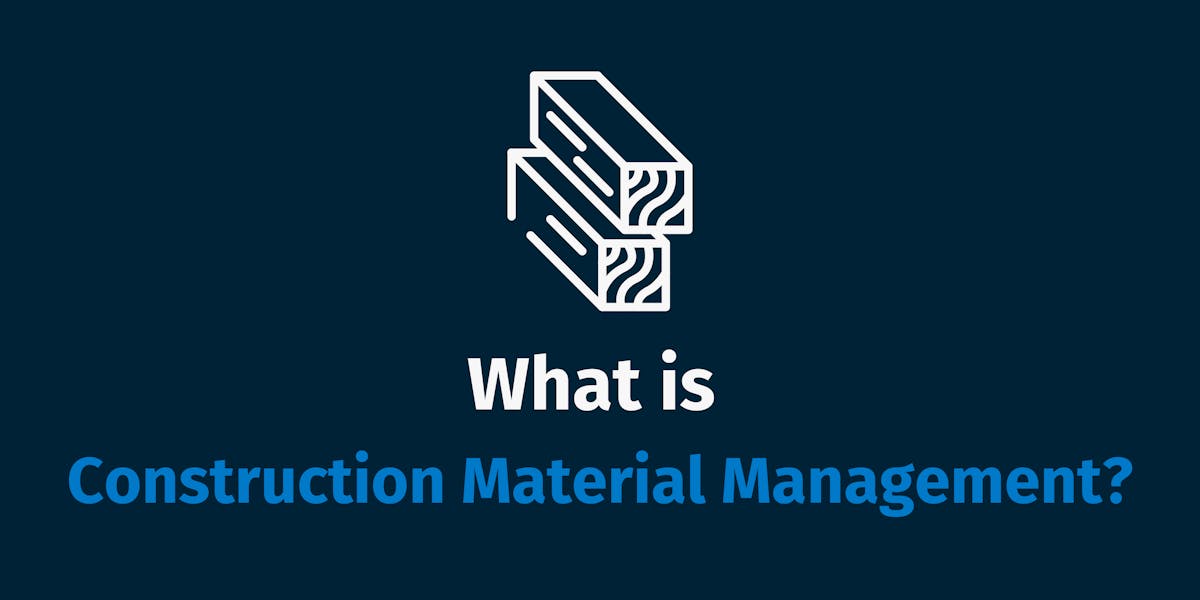Despite the 2020 recession, the construction sector peaked at $1.57 trillion in July 2021 in the US. This ever-increasing growth has led to excessive competition in the sector making it extremely critical for construction companies to continually reinvent their business strategies in order to stay ahead of competitors, including construction material management.
The construction industry is one of the most capital-intensive industries in the United States, and a persistent problem for most construction companies is handling their vast inventories of tools and materials effectively.
Examples of construction materials
- Adhesives
- Cement
- Bulk filling material (soil, rocks, etc.)
- Ceramics
- Glass for buildings
- Gravel
- Lead in construction
- Oil, paints, and coatings
- Plastic, plywood, and polythene
It’s an impressive list and points to the necessity of streamlining construction materials management. This practice helps construction companies stay on top of their materials, so all projects are carried out while ensuring quality and quantity control.
A robust materials management strategy involves making the right selection of raw materials and handling purchase and delivery at a reasonable cost.
Movement and handling of construction materials
Construction tools and equipment often need to be transported from one location to another. Ensuring safety during transit of bulk materials is key. For this to play out well, you must have precautionary practices established.
There are two ways to carry construction materials:
- Horizontal movement refers to the movement of materials from one project site to another. The safest and shortest possible route is chosen to minimize travel and damage costs.
- Vertical movement occurs when materials are carried to a different floor on the same project site. The load should be fastened in the correct manner and lifted carefully to reduce the risk of any accidents.
Another important task is material handling before and after the equipment is shifted to the project site.
Consider the following while choosing a handling system for your business:
- Compatibility with the current storage equipment
- Cost-benefit analysis of all system available on the market
- Characteristics of company-owned materials and future demands
- Availability of capital and resources
The main challenge with materials management is ‘double handling’. It basically means redoing the placement of material because somebody initially put it in the wrong place. Such malpractices depict inefficiency and slow down the business workflow.
To streamline the handling process, you can opt between manual or mechanical handling.
Mechanical handling involves the use of machinery and automated mechanical tools on the construction site, whereas manual handling means extensive use of labor. The latter is relatively cheaper and better suited to confined spaces where large equipment cannot be accommodated. However, mechanical handling greatly accelerates construction projects.
Key components of construction material management
Since a large part of a company’s budget is spent on equipment, you need to lay down some basic guidelines to reduce costs. Buying construction site materials before they are needed can tie up capital in excess inventory. Similarly, running short of materials can slow down projects. Thus, it is essential to iron out your materials management strategy.
Effective material management can be divided into the following components:
- Quantity planning, budgeting, and estimation
- Procurement scheduling and purchasing
- Receiving goods and inspecting for damage
- Stock control, storage, and warehouse placement
- On-site handling and transport
- Waste management
If correctly designed and implemented, these policies can substantially boost your company’s operational efficiency.
Tips for construction material management for maximum returns
The main goal for the majority of construction companies is higher uptime. Project delays can result in disgruntled clients. This can ultimately make you lose both current and potential customers, and take a toll on your company’s growth.
To ensure greater construction plan management and improve operations, here are some guidelines you can follow:
Regularly monitor inventory
Your inventory comprises many different types of materials and tools. Yet, they all signal a shared red alert for unexpected faults and repairs. To avoid any large scale replacement and repair costs, you should regularly conduct preventive maintenance checks on your equipment.
Minimize unexpected breakdowns
- Borderline line cracks on the weld and near the frame
- Dirty air filters
- Corroding coolant levels
- Evidence of wear and tear on tires, track and tread
- Patchy grease fittings
- Cracks on windshield
If you spot any of these indicators, it’s best to schedule it for a service session. Doing so will save you from a dangerous accident on the project site and improve your project management. You can ensure worker safety by establishing such red flag signals for all your construction site materials, tools, and machinery.
Set up service vendors
Despite having a well-trained team for maintenance, it is best to contact dealers for repair and replacement from time to time. Oftentimes, you may receive a piece of faulty equipment or the wrong type of gravel. In such cases, it is important to report such issues to relevant dealers or service vendors.
A professional service team will get the job done faster and in the correct manner. This means your construction crew can save time, and work on other tasks to meet project deadlines.
Establish a collaboration system
If anyone in the project team notices an alarming situation about a piece of equipment, they should alert the relevant department. For a streamlined communication system, crew leaders should put a system in place that allows members to disseminate critical information. Such practices enable you to tackle problems in a jiffy, whether it is low fuel levels in a tractor or broken glass panels in a construction site.
Construction material management system software
The construction industry has many complex and versatile projects. So, firms need to implement a smart, yet simple materials management software to keep them at the forefront of their projects. Adopting a suitable construction materials management software can multiply your company’s rate of return. It can also help you improve the visibility of your daily transactions.
A robust construction material management software not only tracks your need for equipment procurement, but also allows you to keep tabs on the progress of your construction projects. You can allocate specific projects to a certain team and monitor their performance on a daily basis. Remember: Prompt supervision will allow you to control any lags in crew performance, so you can make amendments immediately.
Benefits of shifting to construction material management software
Without an effective material management program in place, you’re at high risk of going over budget, experiencing safety issues, and missing deadlines.
With a great material management software solution, you are more likely to have:
- Better accuracy on orders
- Better relationships with vendors and subs
- Fewer delays with flexible scheduling
- Quick and easy access to important data
- More accurate estimates on future projects
- Greater customer satisfaction
- Improved construction safety
- And more
Raise productivity levels of your construction crew and blaze new trails to success by investing in a cloud-based system for your construction company.









